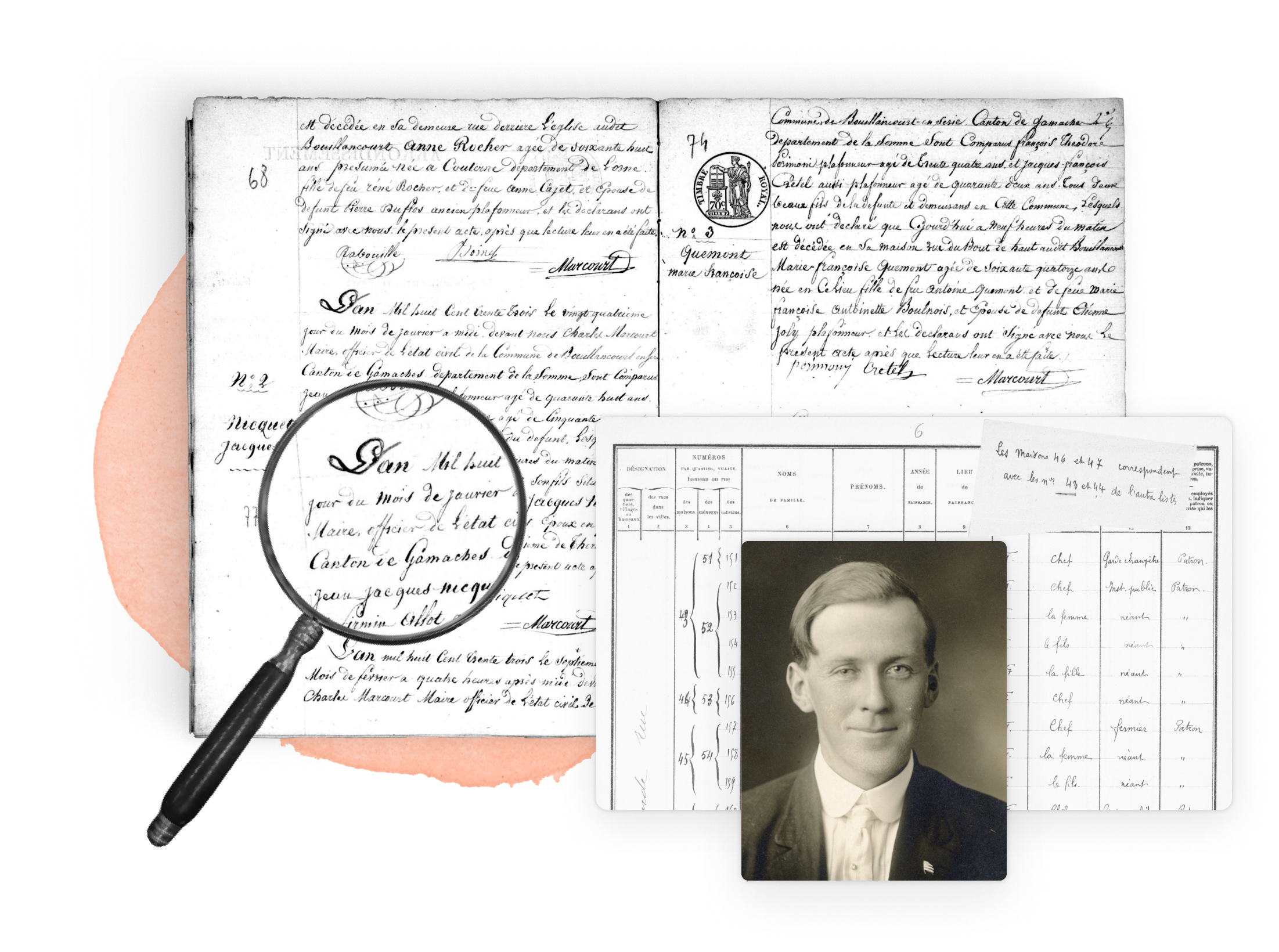
Marriage banns refer to a public announcement or proclamation of an impending marriage. In the United States, however, marriage banns are less prevalent compared to other parts of the world. Instead, marriage licenses have become the standard method for formalizing marriages. Marriage banns have a rich historical lineage, with origins dating back to medieval Europe. During this time, churches required couples to announce their intention to marry publicly. The objective was to ensure that there were no impediments to the marriage and allow the community to voice objections if any existed. Banns were a common requirement during the colonial period in the United States.
Research your ancestors on MyHeritage
Marriage bann in practice
Plymouth Colony’s first marriage regulation in 1636 required the banns to be read to their congregation three times, or if no congregation was in the area, publicity was posted for a fifteen-day period. Quakers were allowed to announce banns to their congregations. Violations of the bann procedure carried a serious penalty which could have been imposed upon the groom or minister.
Marriage banns in the USA were initially influenced by European traditions. Early American colonies often adopted the customs and laws of their European counterparts, including marriage practices. However, as the nation evolved so did its approach to formalizing marriages.
Banns and intentions to marry are made a few weeks before a couple plans to marry. The couple could have been required to announce their intentions to marry to give the community they live in the opportunity to object to the marriage. This custom was common in the Southern states and many New England states through the mid-1800s. The announcement of marriage would typically be announced at the local church three weeks before the event.
Transition to marriage licenses

Over time, the United States moved away from the traditional practice of marriage banns to a system based on marriage licenses. The issuance of marriage licenses became the primary means of validating marriages, ensuring legal compliance and protecting the rights and responsibilities of those involved. Marriage licenses involve a formal application process, where couples apply for permission from the state to marry. This process typically involves providing personal information, paying a fee, and meeting certain eligibility criteria. Once approved, the couple can proceed with their marriage ceremony.
Factors contributing to the decline of marriage banns
Several factors have contributed to the decline of marriage banns in the United States:
- Legalization of Marriage Licenses: The formalization of marriage through licenses became a legal requirement in most states. As the legal framework developed, marriage banns became more of a ceremonial or religious tradition rather than a legal necessity.
- Cultural and Religious Shifts: With a diverse population and various cultural and religious beliefs, the United States has embraced different marriage practices. Many religious and cultural groups still incorporate elements of marriage banns within their ceremonies, but the overall trend has shifted towards the use of marriage licenses for legal recognition.
- Administrative Efficiency: The marriage license system is seen as a more efficient and standardized way to manage and record marriages. It allows for easy documentation of marriages and provides legal protection and recognition.
Contemporary relevance
While marriage banns have diminished in popularity within the general population, certain religious and cultural communities in the United States still observe this practice. For instance, some Orthodox Jewish and Catholic communities maintain the tradition of announcing an impending marriage in their congregations.
The United States has shifted from the historical tradition of marriage banns to a modern system of marriage licenses for legal recognition. While the cultural landscape has evolved, marriage banns continue to hold significance within specific religious and cultural communities, highlighting the diverse practices that contribute to the nation’s fabric.
Finding marriage banns in the United States

Marriage records availability can vary from location to location. It is important to search the local area archives for marriage records where your ancestors were married. Some places to look for marriage banns are:
- Church records where the bann was announced and marriages were recorded for their records.
- City or county marriage registers and records filed at the local government level.
- Family Bibles could have information about the marriage bann and marriage in general.
- Early newspapers could have printed the marriage bann.
See also
- Marriage records
- Marriage bonds
- Marriage consents
- Birth, death, and marriage records in Australia
- Israel marriage records
- How to search for marriage records in Israel
- Marriage records in Russia
- Family bibles
- Civil registrations
- Vital records
- How to get started with genealogy research
- How to research in an archive
- Archives
Explore more regarding US marriage banns
- Marriage & Divorce records collection at MyHeritage.
- Plymouth, USA records collection at MyHeritage.
- France, Church Marriages and Civil Marriages - a collection of church marriages and civil marriages and select marriage banns recorded in France.
- A Step-by-Step Guide on How to Look Up Marriage Licenses at MyHeritage Blog.
- Marriage Records: Everything You Need to Know at MyHeritage Blog.
- Wales, Parish Marriages and Banns - records collection at MyHeritage.
- England & Wales, Marriage Index, 1837-2005 records collection at MyHeritage.
- England Marriages, 1538-1973 records collection at MyHeritage.
- Germany, Marriages, 1558-1929 records collection at MyHeritage.
- Netherlands, Civil Marriages, 1811-1940 records collection at MyHeritage.
References


